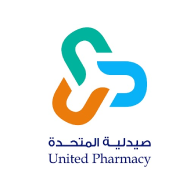Need Physician?Approval
Cureaml 500 Mg 30 Capsules

Out of stock
SKU :
1012-HK112
It is used in the treatment of: Melanoma (melanoma) Chronic refractory myelogenous leukemia Ovarian cancer (in the case of recurrent, metastatic, or irreversible tumor)
What are the uses of Curamel?
It is used in the treatment of: Melanoma (melanoma) Chronic refractory myelogenous leukemia Ovarian cancer (in the case of recurrent, metastatic, or irreversible tumor) Squamous cell carcinoma (of the head and neck): As an adjunct to radiotherapy, except for lip cancer in anemic patients Sickle cell: to reduce the frequency of pain episodes in adult patients with recurrent acute pain episodes
What are the contraindications for the use of Kuramel?
It is contraindicated in patients who have shown hypersensitivity to the drug or any part of its components, or in the presence of severe decline in bone marrow function (i.e. leukocytes < 2500 or platelets < 100 000, or severe anaemia).
What are the side effects of Curamel?
Side effects of treatment: Nausea, vomiting Constipation or diarrhea Inflammation of the mouth and mucous membranes Bone marrow suppression Rash, skin ulceration Impaired kidney function
What are the precautions for using Kuramel?
Safety class during pregnancy: “D”; It is not recommended to use the treatment during pregnancy, as it may harm the fetus, and pregnancy should be avoided during the treatment period. Lactation: It is not known whether the drug is excreted in breast milk in the case of nursing mothers, but due to its harmful effects on the human body, lactation should be avoided during the treatment period. The safety or effectiveness of the treatment in children has not been established. It was noted that elderly patients are more susceptible to side effects of treatment, and may need lower doses. The treatment should be used with caution in patients with renal disease, in some cases the dose may need to be adjusted. Treatment may cause carcinoid lysis syndrome; Which causes a high level of urea in the blood, it is preferable to prevent the patient from obtaining such symptoms by giving him adequate amounts of fluids and allopurinol. Treatment may cause secondary cancers to develop. Treatment may cause severe bone marrow suppression which may manifest as anaemia, decreased performance or platelet deficiency; Therefore, the patient must be monitored and blood tests done periodically. The treatment may cause cutaneous vascular toxicity, such as the appearance of vascular ulcers or gangrene, especially in patients who have been subjected to interferon treatment. If such symptoms appear, treatment should be discontinued and, if possible, replaced with another treatment. Treatment may cause erythrocyte abnormalities, megaloblastic anemia (similar to anemia associated with vitamin B12 deficiency), and the condition is self-limiting (it resolves without treatment).
What are the drug interactions with Curamel?
Antiviral therapies (eg, didanosine, indinavir, stavudine): Chronic administration of both therapies may cause serious cases of pancreatitis, toxicity or liver failure, therefore concomitant administration of the two therapies is contraindicated. Bone marrow suppression agents or radiotherapy increase the risk of resulting bone marrow suppression. Agents that induce uricosuria (eg, probenecid) Hydroxyurea may cause an increase in uric acid in the blood. The patient may need an adjustment in the dose.
What are the dosage forms of Curamel?
500 mg capsules
What are the storage conditions for Curamel?
Store the capsules at room temperature (25°C) in a tightly closed container
| Offer Label | Need Physician?Approval |
|---|---|
| Shipping Type | Express |
Write Your Own Review



